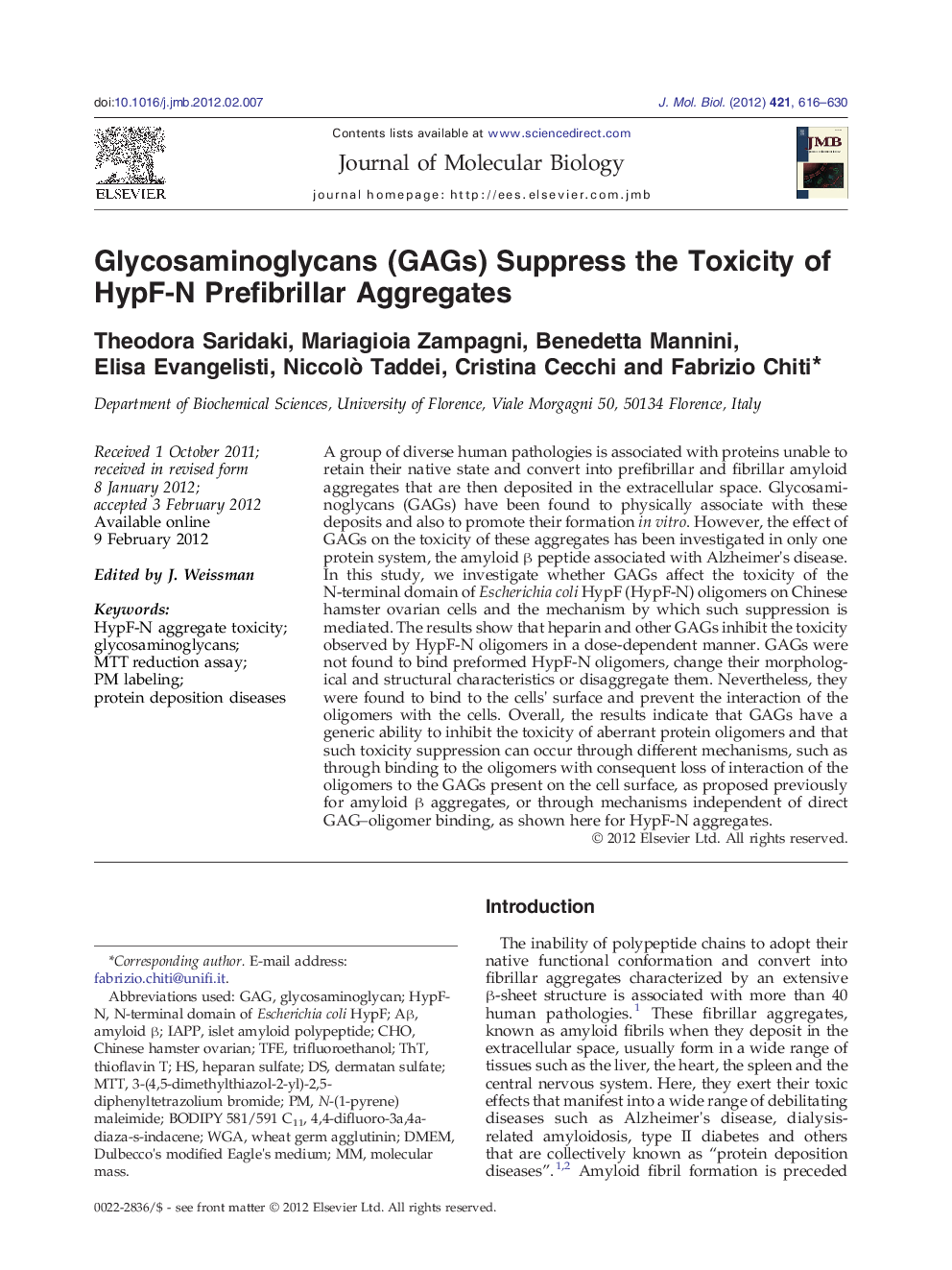| Article ID | Journal | Published Year | Pages | File Type |
|---|---|---|---|---|
| 2184925 | Journal of Molecular Biology | 2012 | 15 Pages |
A group of diverse human pathologies is associated with proteins unable to retain their native state and convert into prefibrillar and fibrillar amyloid aggregates that are then deposited in the extracellular space. Glycosaminoglycans (GAGs) have been found to physically associate with these deposits and also to promote their formation in vitro. However, the effect of GAGs on the toxicity of these aggregates has been investigated in only one protein system, the amyloid β peptide associated with Alzheimer's disease. In this study, we investigate whether GAGs affect the toxicity of the N-terminal domain of Escherichia coli HypF (HypF-N) oligomers on Chinese hamster ovarian cells and the mechanism by which such suppression is mediated. The results show that heparin and other GAGs inhibit the toxicity observed by HypF-N oligomers in a dose-dependent manner. GAGs were not found to bind preformed HypF-N oligomers, change their morphological and structural characteristics or disaggregate them. Nevertheless, they were found to bind to the cells' surface and prevent the interaction of the oligomers with the cells. Overall, the results indicate that GAGs have a generic ability to inhibit the toxicity of aberrant protein oligomers and that such toxicity suppression can occur through different mechanisms, such as through binding to the oligomers with consequent loss of interaction of the oligomers to the GAGs present on the cell surface, as proposed previously for amyloid β aggregates, or through mechanisms independent of direct GAG–oligomer binding, as shown here for HypF-N aggregates.
Graphical AbstractFigure optionsDownload full-size imageDownload high-quality image (133 K)Download as PowerPoint slideHighlights► We study the effects of GAGs on the toxicity of HypF-N prefibrillar aggregates. ► GAGs suppress the toxicity of these aggregates in a dose-dependent manner. ► GAGs do not bind or change the morphology and structure of these aggregates. ► GAGs bind the cells and prevent interaction of the aggregates with the cell surface. ► Novel mechanism of GAG suppression, independent of direct GAG–oligomer binding.
